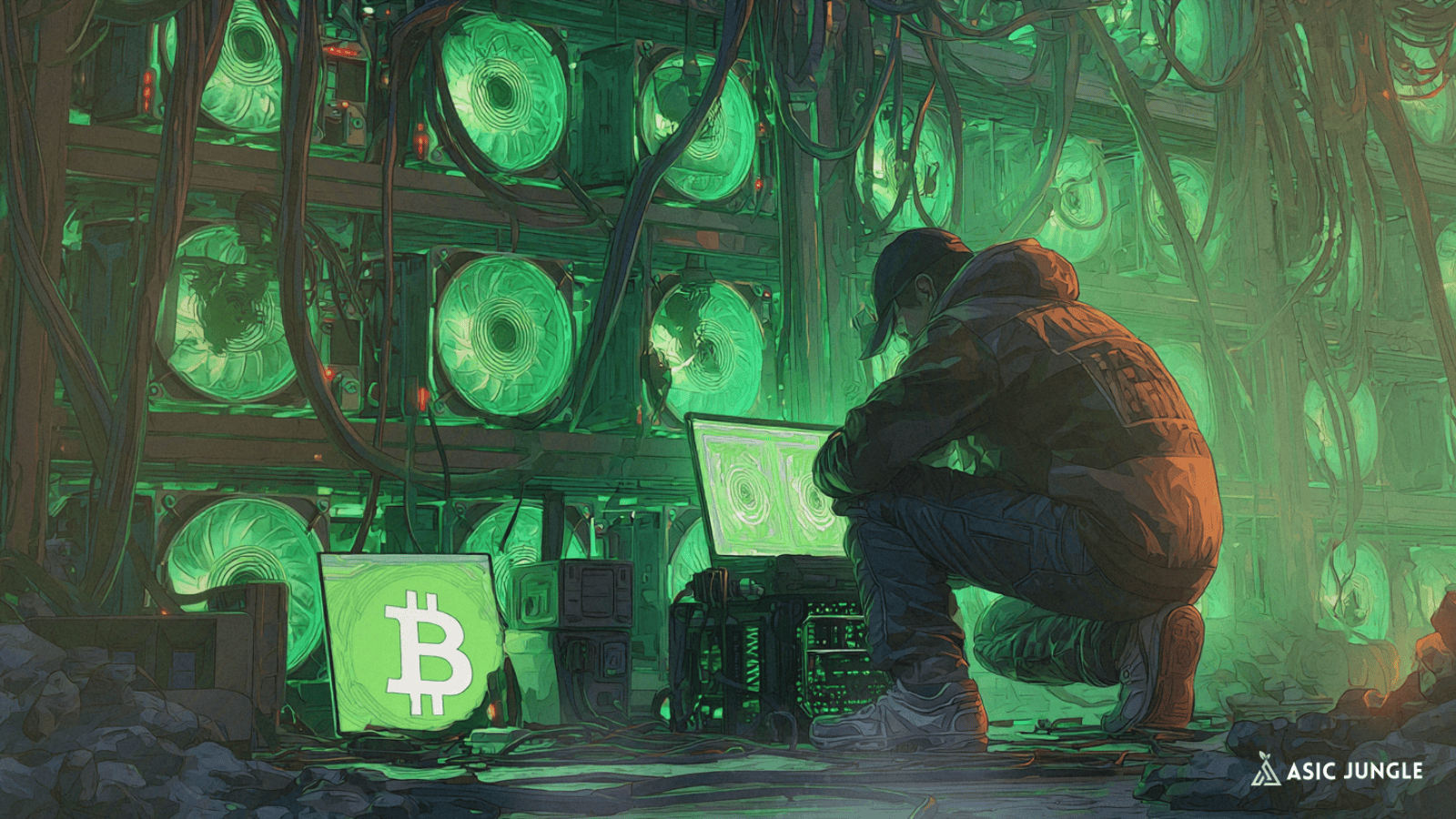Can You Still Solo Mine and Win?
Solo mining sounds like a relic of the past. With the network difficulty pushing all time highs and industrial operators scaling into the hundreds of megawatts, the idea of a single player plugging in machines and solving a block feels improbable. Yet, every so often, the news cycle reminds us that it still happens.
In July 2025, block 907,283 was solved by a solo miner operating at roughly 2.3 petahash per second, earning the full 3.125 BTC reward. Earlier in the year, block 887,212 was found by a miner using a 480 GH/s Bitaxe rig, which earned 3.15 BTC. These wins are rare, but they are fully documented. Each case shows that even with modest setups, solo miners can still capture entire block rewards, contradicting the belief that only industrial operators have a chance.
Why Solo Mining Still Works
The Bitcoin protocol does not discriminate by size. Every machine competing to solve a block is part of the same lottery.. The expected time to hit a block scales with hashrate, but probability does not vanish for smaller setups. This is what keeps solo mining alive.
A miner with a modest operation may never expect to win in a predictable timeframe. Yet variance means the improbable becomes possible. When it does, the payout is substantial. The math looks harsh, but the outcomes prove there is still room at the edges of the network for small operators. It also matters that solo mining carries no payout splits or pool fees. While pools provide predictability, solo winners take everything. That “all or nothing” model is what gives these occasional wins such weight, both financially and symbolically.
Conditions That Favor the Solo Miner
What separates the solo miners who succeed from those who fade out? Across the industry, a few recurring patterns stand out. Many of the most successful solo miners are the ones who locate power deals that larger operators pass over. Whether it is a stranded hydro project, flare gas, or local curtailment, small players can exploit opportunities that do not scale well for industrial firms.
They are also able to move faster. A solo miner can shift machines to new jurisdictions, experiment with setups, or take advantage of distressed hardware sales long before corporations can react. Finally, they often prove more resilient in downturns. When the market turns bearish, the overhead of a mega farm becomes an anchor, while lean operators who keep costs low and hardware mobile can wait out difficult adjustments and scoop up machines when others are forced to liquidate.
Another advantage comes from being closer to the hardware itself. Large companies often outsource servicing and repairs, which creates downtime. A solo miner who can troubleshoot, repair, or repurpose their own rigs can get machines back online faster and preserve every ounce of uptime.
Beyond the Payout
For solo miners, the appeal of finding a block is obvious: the financial reward. Yet the meaning runs deeper. Each solo win reinforces the decentralization of Bitcoin, proving that the protocol remains open to individuals even as the industry grows more professionalized
The symbolic value of these wins is significant. They remind both miners and the broader community that scale is not the only path to success. Ingenuity, persistence, and timing still carry weight.
Solo mining also introduces a psychological dimension that pool mining lacks. Routine payouts can feel mechanical, while solo mining carries anticipation. Every hash has the potential to be transformative, and that chance keeps operators engaged in a way steady earnings cannot.
A Calculated Gamble
Solo mining carries risk, yet the gamble is not blind. The odds look intimidating, but the cost of entry depends heavily on how effectively a miner can secure inexpensive power and hardware. For those who manage to keep expenses low, the potential reward can justify the uncertainty.
Each block won by a solo miner highlights a key truth about the industry: scale delivers efficiency, while agility creates opportunities. Large operators dominate through volume, whereas smaller miners thrive by moving quickly and exploiting conditions the big players overlook. These two paths coexist on the same network, each with its own strengths. Some miners may view solo mining not as reckless risk but as a speculative play – a small bet on a big upside while their main operations stay grounded in more predictable strategies
The Bottom Line
Solo mining in 2025 is not about chasing consistency. It is about embracing variance, leveraging unique conditions, and staying nimble where larger players cannot. The wins are rare, but they continue to happen, and when they do, they rewrite the narrative about who can still compete in Bitcoin mining.
Solo mining survives not by competing with corporations on scale, but by thriving in the cracks they leave behind. That persistence matters. It keeps Bitcoin’s promise of open participation alive, reminding the industry that the next block could, in fact, belong to anyone.






